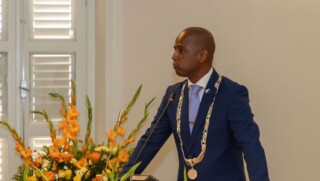Why Leadership is Not a ‘One Size Fits All’ Affair
During my studies in Organizational and Industrial Psychology at the University of Groningen, I was already fascinated by the complexities of leadership. One of my early mentors, fellow psychologist Harold Arends, always used the slogan in our native Papiamentu: “Un lider no ta nase, bo ta form’é”—a leader is not born but made. Over the course of my career, I’ve often reflected on this idea and, at times, questioned its validity.
In practice, we often observe that certain individuals naturally take the lead in a group or workplace, suggesting that the ability—or interest—in leading might have an innate component. But what does that imply for those who, willingly or unwillingly, find themselves in leadership roles later in their careers but are not “born leaders”? Are they doomed to exhibit poor leadership by default?
Daniel Goleman, renowned for his work Emotional Intelligence: Why It Can Matter More Than IQ, argues that while some leadership traits may stem from personality, critical leadership skills like self-awareness and empathy can be learned and developed. Similarly, leadership experts James Kouzes and Barry Posner emphasize in The Leadership Challenge that leadership behaviors can be taught, practiced, and refined through conscious effort. This empirical evidence suggests that leadership is not solely innate but can also be cultivated.
Leadership Style
An equally intriguing question is whether leadership always looks the same and what determines the type of leader someone becomes. Groundbreaking research in the 1960s by Robert R. Blake and Jane S. Mouton led to the development of the Managerial Grid, which identified two key dimensions of leadership: showing personal concern for employees and engaging in task-oriented behaviors, such as providing clear instructions.
While their model was highly influential, it had its limitations, particularly its normative approach. It assumed that participative or democratic leadership was inherently “good,” while authoritarian leadership was considered “bad” or undesirable. This perspective overlooks the context in which leadership is exercised. For instance, a fire chief managing a major blaze has no time for participatory decision-making; an authoritative approach may be the only way to ensure safety and success.
Situational
This is where the work of Paul Hersey and Ken Blanchard becomes invaluable. In the 1960s, they introduced the theory of Situational Leadership, revolutionizing how leadership was understood. Their model was the first to propose that there is no single best leadership style, but rather that leaders must adapt their approach based on the competence and commitment of their team members. This flexibility ensures that leadership is tailored to the specific task or situation at hand, focusing not just on the leader’s preferences but on the needs of employees.
Research by the Blanchard Companies reveals that over 50% of leaders tend to rely on one dominant leadership style, applying it indiscriminately. For example, an authoritarian leader might always default to their preferred style, even when a participative approach would be more effective—and vice versa.

Too little or too much?
This rigidity can result in what Blanchard describes as over-supervision or under-supervision. Over-supervision occurs when leaders micromanage capable employees, stifling their autonomy. Under-supervision happens when leaders give too much freedom to less experienced employees who still require guidance. Both scenarios are counterproductive.
I recently completed an intensive two-week course that certified Linkels & Partners as an authorized training center for Situational Leadership. Although I tend to approach theories and methodologies with a healthy dose of skepticism, I found this framework deeply resonant—especially as it revealed aspects of my own leadership tendencies. According to the accompanying assessment, I rely too heavily on a democratic leadership style and fail to adopt a more directive approach when the situation demands it.
Does this resolve the debate about whether leadership is innate or learned? From my experience as an assessment psychologist, I firmly believe that some individuals are more inclined to take on leadership roles than others, suggesting there is indeed an innate element. However, what has been a true eye-opener for me is how dramatically applying the right leadership style at the right moment, can influence not only how employees feel but also how effectively they perform.
For instance, an experienced employee with extensive knowledge and skills does not need an overly directive or intrusive manager. Conversely, it is equally unfair to leave a less experienced, struggling employee to fend for themselves, risking failure or demoralization.
If there’s one thing all the theories, research, and training have made clear, it’s this: Leadership remains a complex and evolving challenge that no one ever fully masters.













